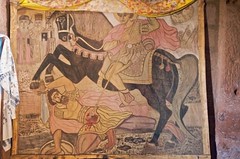Christmas Tree Tradition Through the Ages
Decorated evergreen trees are a beloved symbol of the Christian holiday of Christmas. However, history tells us that conifer trees were worshipped by various societies long before Christians caught on to the idea.
Ancient Egyptians were one of the first known civilizations to treasure the conifer. When the winter solstice arrived, the Egyptians used to move green date palm leaves inside to symbolize life over death. When Romans celebrated their winter solstice festival, Saturnalia, they decorated their homes with greenery and lights as a way of giving thanks for a good season and praying for another upcoming season of plenty. It is also said that the Druids used evergreens in their winter solstice rituals. They positioned evergreen branches over doors to ward off evil spirits and prevent them from entering their homes.
The evergreen tree’s association with Christianity dates back about 500 years ago to the early 16th century. As the story goes, St. Boniface was traveling through the woods of what is today northern Germany, when he came across a group of pagans that were worshipping an oak tree. St. Boniface was so angered by this that he cut the oak tree down. It is said that in the oak tree’s place, a conifer tree grew almost immediately. In amazement, St. Bonifice declared that this was a divine symbol of the Christian faith, and from that time forward, conifer trees began to be associated with Christianity. Eventually, German people began to bring coniferous trees indoors at Christmastime and decorate them with candles to celebrate the holiday.
When Prince Albert of Germany married Queen Victoria of England, he brought his German tradition of the Christmas tree to
